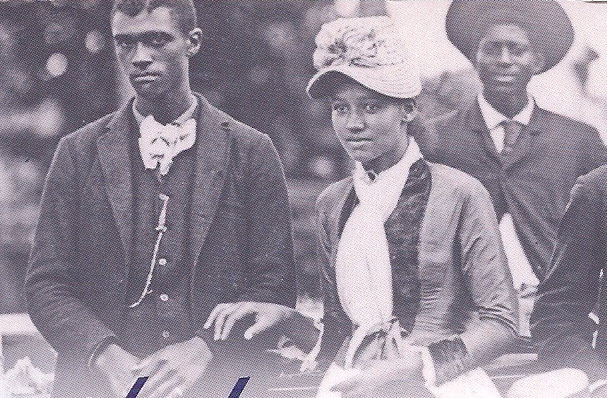The Clothing of Slaves Bloomed on Sundays
Henry’s face lit up when he spotted the mystery girl coming straight toward them, with a friend flanking her on either side–all of them carrying white parasols and all wearing flowered and feathered bonnets. The girl’s bonnet had a compact brim that arched above her forehead and displayed a colorful cluster of flowers in the front. Henry froze, unsure what to say or do. So he simply removed his hat and gave a shy nod of his head.
* Â * Â *
 When I wrote for VeggieTales, figuring out the clothing for talking vegetables wasn’t a big issue. Wardrobe selections were left up to the artists. But when I made the transition to historical fiction, I found that clothing was crucial in setting the scene, especially when a story is attempting to transport readers 160 years back in time.
When I wrote for VeggieTales, figuring out the clothing for talking vegetables wasn’t a big issue. Wardrobe selections were left up to the artists. But when I made the transition to historical fiction, I found that clothing was crucial in setting the scene, especially when a story is attempting to transport readers 160 years back in time.
Suddenly, I found that even a simple hat selection could pose a problem. For instance, in The Disappearing Man I depicted James Smith–Henry Brown’s closest friend–wearing a bowler hat in a few scenes. A bowler, I decided, befitted James’s jaunty, ladies man persona. Only one problem. A week before the first draft of The Disappearing Man was due, I discovered that the bowler hat hadn’t been invented in Henry Brown’s time.
According to the online answer man, Ask Jeeves, “The bowler hat first made its appearance as the hard hat designed by James Lock and Co. of 6 St. James Street, London, in 1850 for Sir William Coke, to give to his game wardens to wear when patrolling their employer’s estate on horseback.”
What I found most curious in researching The Disappearing Man was the Sunday clothing of slaves. Midori Takagi, in Rearing Wolves to Our Own Destruction, writes about Richmond churchgoers: “Proud of their wardrobes, slaves prominently displayed their finery on Sundays and holidays, thereby brightening the usually dusty drab streets on those days. As traveler J.S. Buckingham described, ‘On Sundays…the females [slaves] wear white muslin and light silk gowns, with caps, bonnets, ribbons and feathers; some carry reticules on the arms and many are seen with parasols, while nearly all of them carry a white pocket-handkerchief…the young men, among the slaves, wear white trousers, black stock[ing]s, broad-brimmed hats and carry walking-sticks.'”
During the workweek, everything was different for the slaves. They wore coarse cotton clothes. But as the British essayist Joseph Addison once said, “Sunday clears away the rust of the whole week.” For Henry Brown and his friends, that observation applied to Sunday clothes as well.
By Doug Peterson
